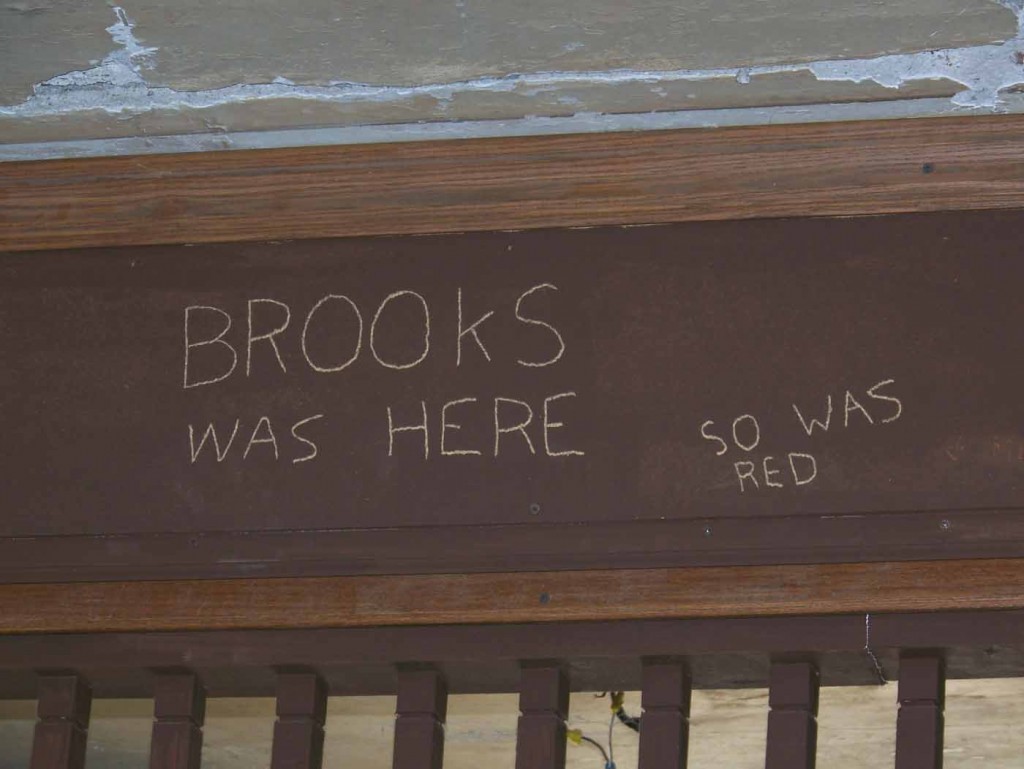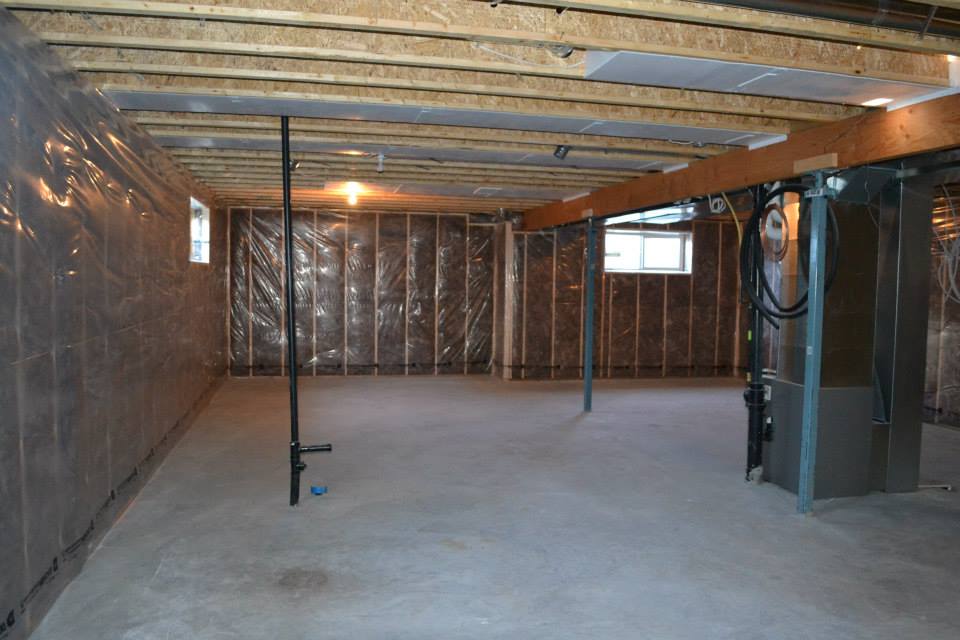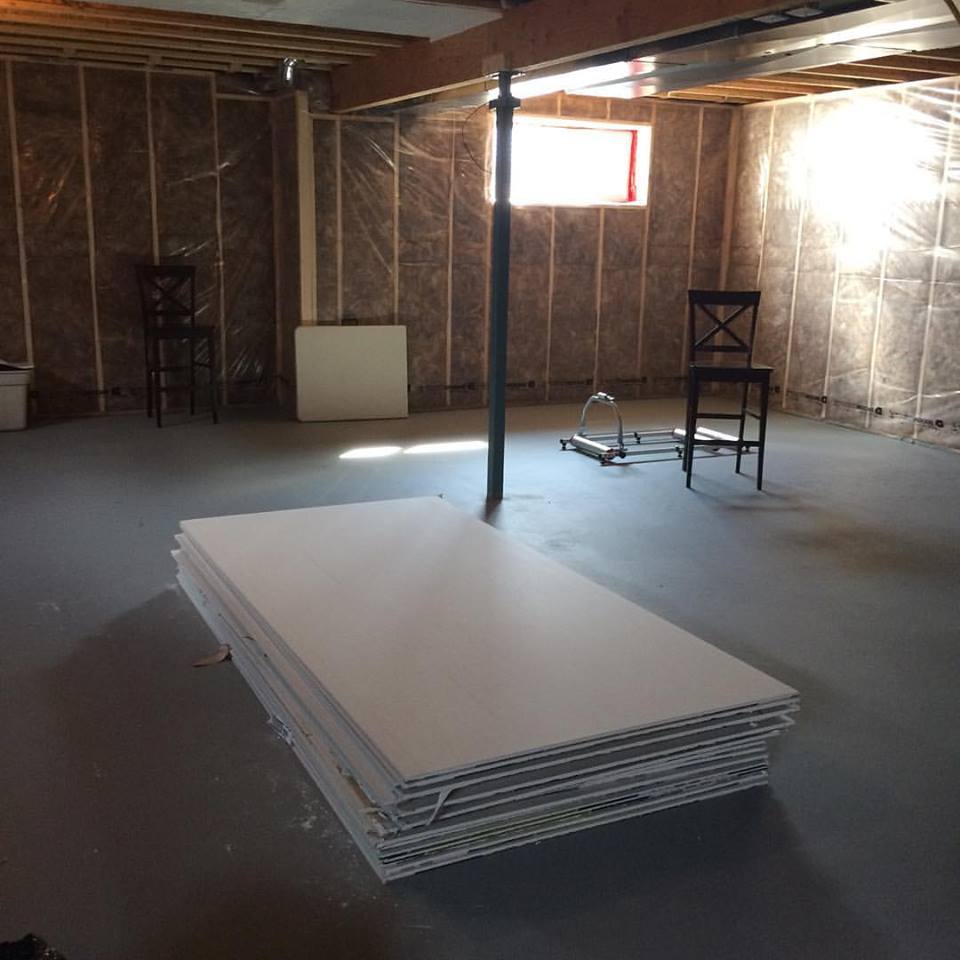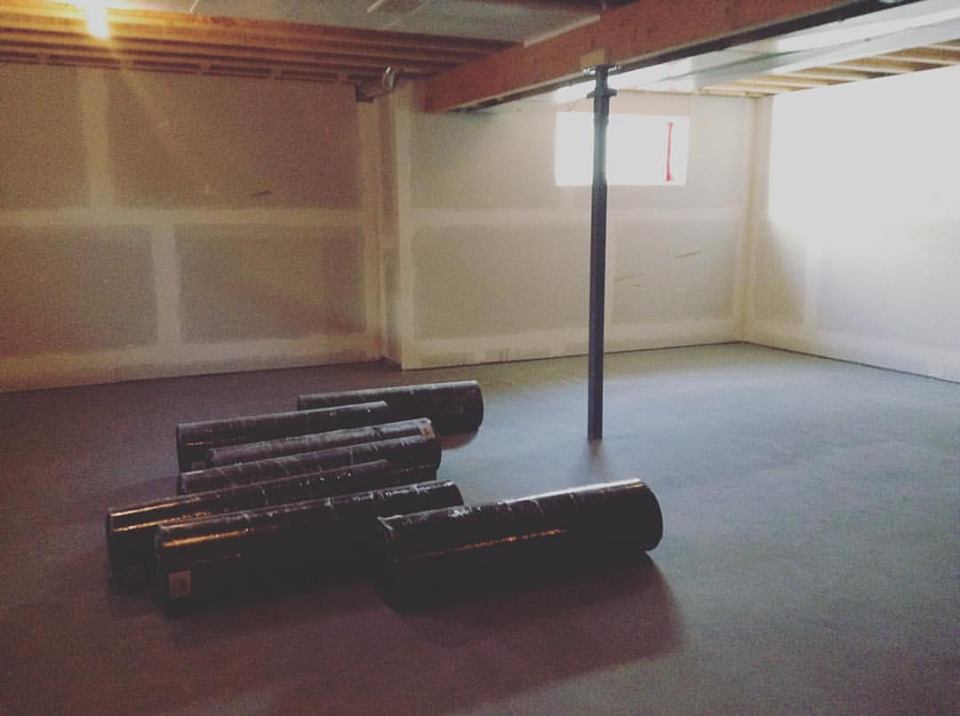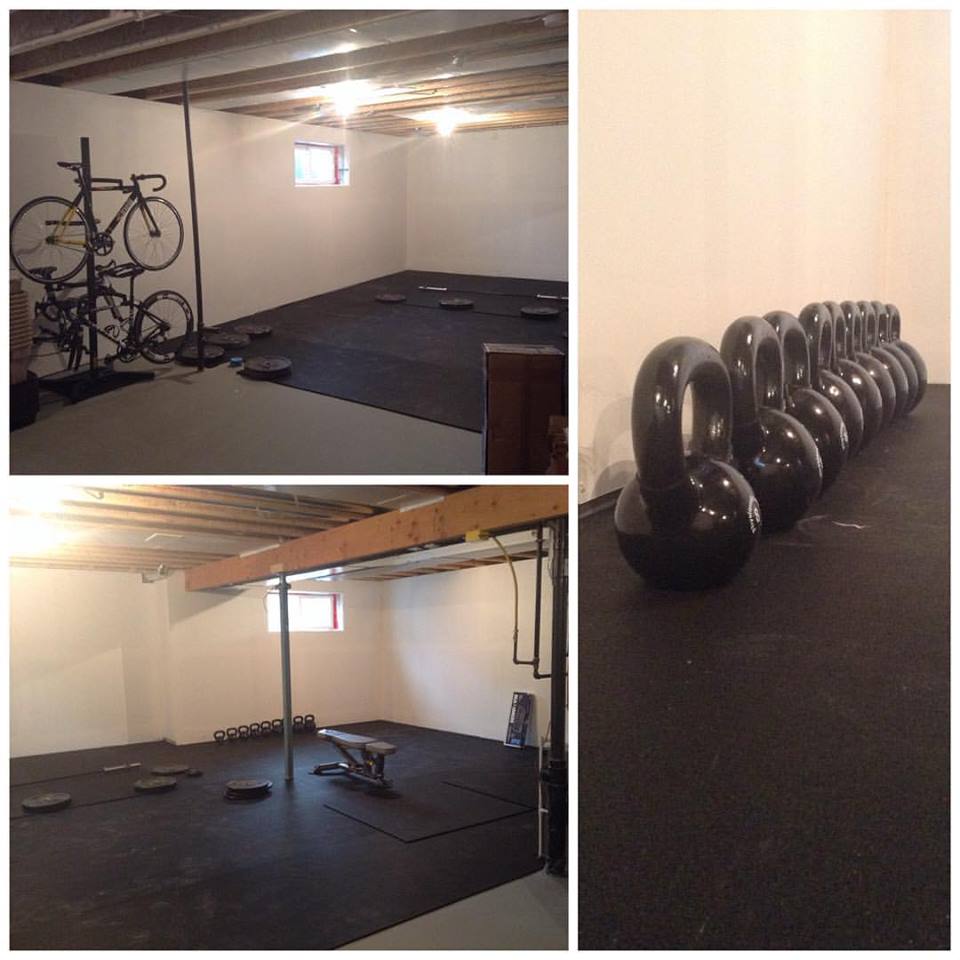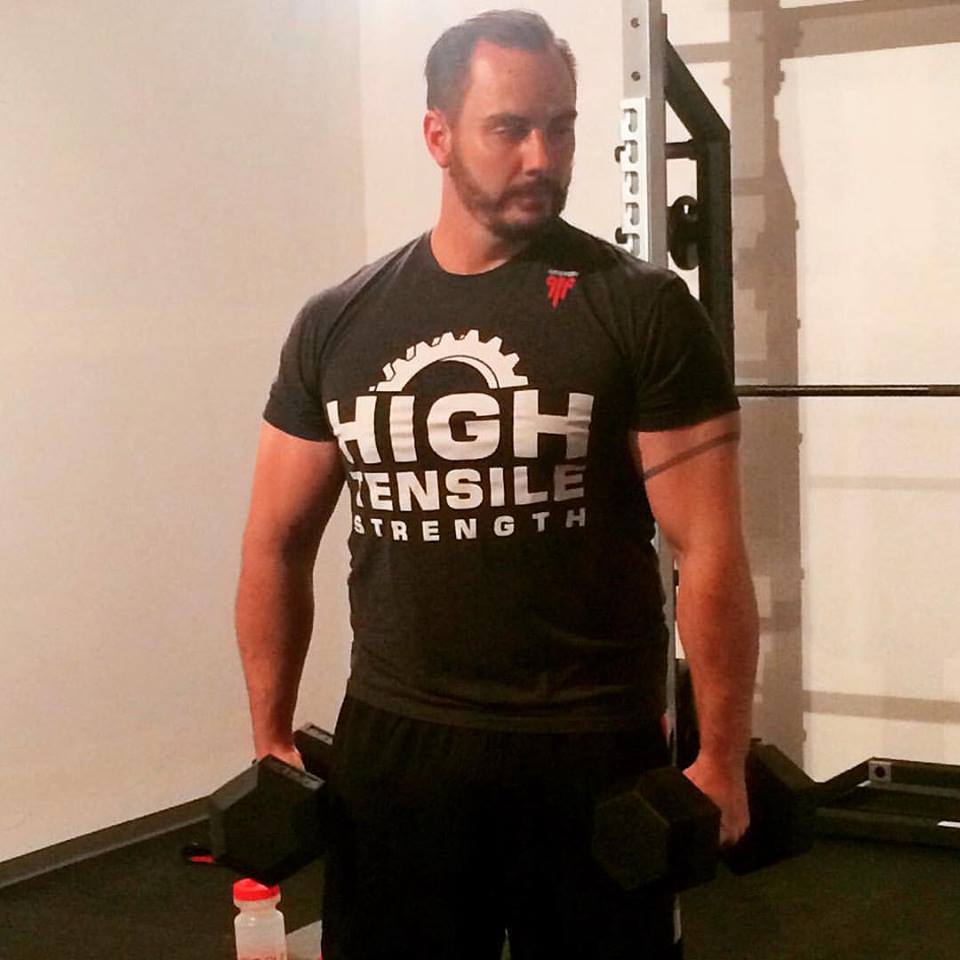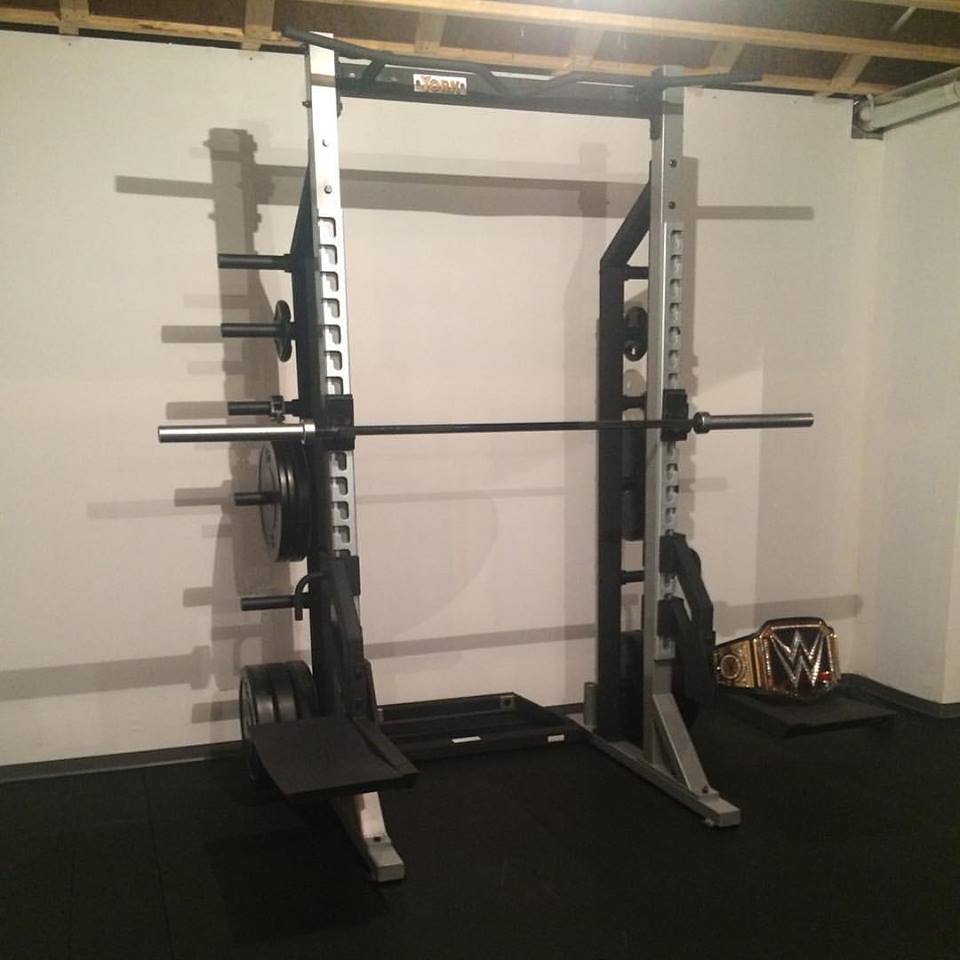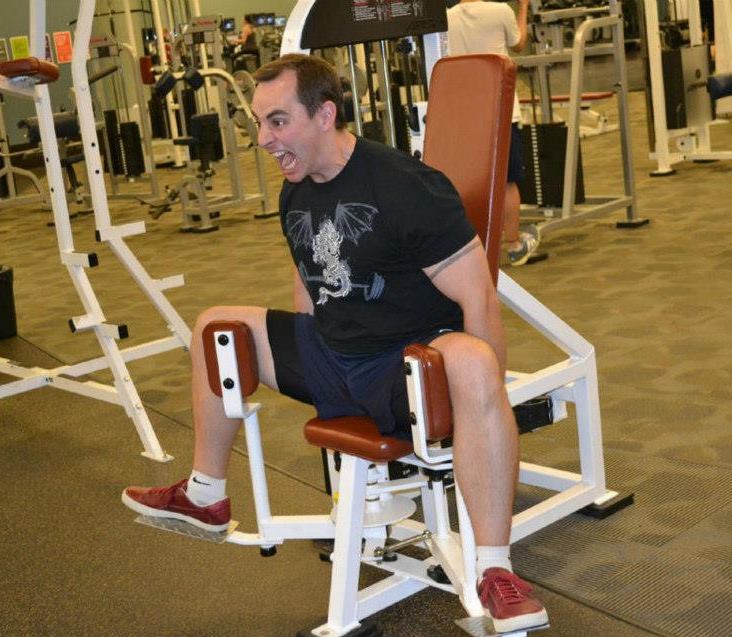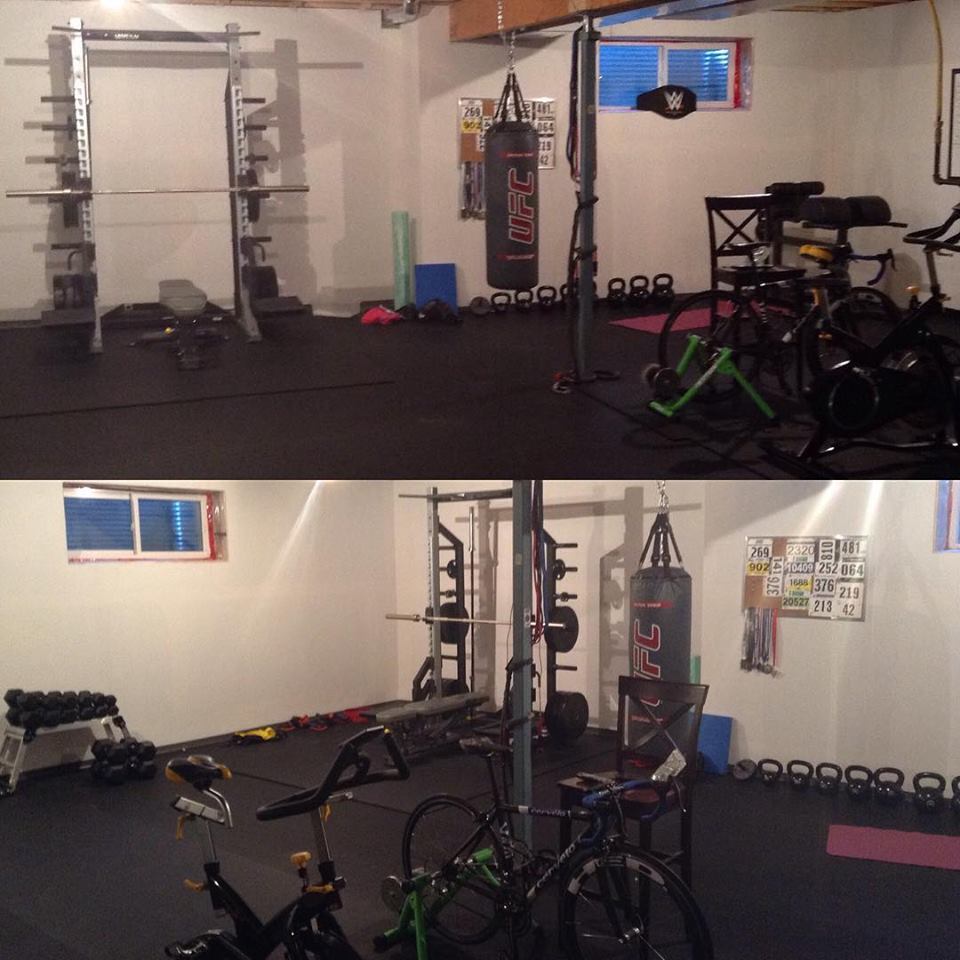Building the Basement of Champions: How to Build a Legendary Home Gym
About 2 years ago, my wife and I started gathering the resources and researching the possibility of building a new house. We knew some of the stuff we wanted (a kitchen, more than one working toilet, a fireplace for when it’s -40C outside, a garage, floors, etc), but then it was the “wouldn’t it be nice if we could have this” list. One of the big things we both wanted was the concept of a home gym. Not just a treadmill and yoga mat in the corner of a room that doubled as laundry hanging, but an actual clangin and bangin training empire of excellence that we could deadlift like beasts, drop weights with impugnity, and listen to the kind of gritty grimy music that makes parents question your life choices and PRs tick off like Brooks ticked off days in the Shawshank Redemption.
So as we went through the process, we agreed that we could set up portion of our basement as a gym, and the other portion as storage and shelving. So in today’s post I wanted to talk you through the process we used to create the #basementofchampions going through everything from building concept to floorplan layout to special considerations and even pricing on the equipment we purchased. Keep in mind much of it was done in Canadian dollars, which are worth about as much as an American quarter these days, and also because shipping some equipment from the states to Canada pretty much doubles the cost compared to buying it from a local equipment store or warehouse.
Throughout the post I’ll note specific items or companies, but I don’t make any commissions if you choose to purchase them I use them only to illustrate what we’ve done and what other options are out there.
Some important questions to ask before doing anything
A home gym set up like ours isn’t something to rush into. If all you want is a small space to do some yoga or foam roll, it’s definitely different since the financial investment and design aspects are entirely different and not to discount the choice at all, but one that’s significantly easier to back out of if you decide you’re bored or don’t want to do it, or if you move or whatever compared to creating a relatively sizeable chunk of your house to a specific purposed area.
Are you the only one in your house who will use the space or does everyone buy into using it? Also, how often can you actually see yourself using the space? If it’s daily and a massively important part of you as a person and your entire household could conceivably use it, that’s going to dictate how much space you devote to it.
Do you have a floorplan that allows you to actually do this? Is your basement or garage a space you can use to make this happen, or do you have a room in your house you would be willing to convert to a gym use? Also, how big is that space, how high are the ceilings, and how adaptable do you need the equipment to be? A full squat rack in a 200 square foot space sounds cool, but when it takes up the entire room you’re going to wish for something different, especially when the chin up bar is scraping the roof.
What kind of financial investment are you ready to put in to it today versus invest over time?
What activities are important to you? Do you even need a squat rack or would you be able to get away with other stuff entirely? My wife’s a cyclist and I prefer riding a bike to running, but maybe you prefer running or using a stairmaster or rower instead.
Everyone is going to have a different situation, so make it one that works for you.
Setting up the space
One of the nice things about building a house is that you don’t have to do any renovations once you move in. We decided to go with an unfinished basement in our house for 2 main reasons. First, financially we didn’t have to pay for a finished basement, which was a substantial cost with the builders, and second we knew we would be using the space as a gym anyway, so it sped up the process of development and layout.
The space we decided on in the house was an area between the back wall and the furnace, as shown in this early picture.
The total square footage of the area worked out to around 630 square feet, which was only slightly smaller than the house we moved out of to get in to this place. It was a bit of a mind screw to think that.
We were able to take possession with the walls studded and insulated, and the floor painted a with a basic concrete paint, which is pretty awesome considering some builders just leave exerterior concrete with no wall studding or insulation if the basement isn’t finished. The area stays warm in the winter, which is awesome for a basement in Edmonton. The roof is also 9 feet high, making it fantastic for things like overhead pressing, jerks, kettlebell overhead work, and any kind of jump rope work I may want to do. Being 6’2″ and with a reach of 8″0″, this is a big bonus to me. My wife’s 5’7″ so she’s clear no matter what we do.
To prepare the space, we decided to drywall and primer coat the walls to make it look a little cleaner and brighten the area up significantly. From there we got half inch rubber flooring in a roll form, which cost much more than some options like horse matting, but makes a big difference in how it looks and feels.
The drywall was half-inch ultra light 8×12 panels, and in total cost about $350 for the panels, tape and mud plus tools to do the mudding work. The flooring was in 4 x 25 foot rolls, each weighed about 200 pounds and were a complete bitch to haul into the house and down the stairs, but they look pretty awesome now that they’re all in. I adhered them to the floor with a basic carpet tile glue and trowel. The total cost for the flooring was $2767 for 700 square feet of flooring (we used some of the excess for under the squat rack and bikes). Getting the rolls versus buying the pre-cut tiles saved about $2000 for the same square footage, and having straight black colour versus a speckled design or natural rubber also saved a few thousand. By going through a local distributor we were able to save significantly on shipping and freight charges as well.
Next up came the weights. For plates, I knew I was going to want to get into some olympic lifting again, as for the past 10 or so years I’ve only had ready access to iron plates and dropping them tends to make everyone around you shoot you dirty looks. Bumper plates can run the full spectrum of costs, ranging from about a dollar a pound for the basic economy plates to $5-10 a pound for more competition style pendlay and Eleiko style plates. They’re gorgeous, and bounce really nicely, but for me and the wife the higher cost plates wouldn’t be necessary, so we opted for economy bumper plates.
We went for a variety of sizes, but with a specific ideal in mind of how they would be used. We only got 4 10 pound plates, and 2 25 pound plates, as well as 6 45 pound plates and 2 small 5 pound plates. The reasoning for the specifics on this is that to make any combination of weights in 10 pound increments, this is the smallest number of plates needed to hit every single increment up to 415 pounds. If I want to lift more in the future, I can just go buy another pair of 45 pound plates and still achieve the same incremental ability.
Purchasing more 25s than this wouldn’t be necessary, nor would getting more than 4 10s, unless I wanted to do drop sets or very specific loading patterns where the weight would be switched frequently. Which I don’t.
For kettlebells, they tend to go for roughly the same price as weight plates at around a dollar a pound, sometimes slightly more. For much of what we planned to do, getting a variety of weights from 8kg to 40kg would be sufficient, plus allowed us to adjust our workouts easily depending on whether I was doing swings (40kg) or she was doing a turkish get up (8kg) to overhead presses for me (32kg) to swings for her (24 kg). There are adjustable kettlebells out there, as well as home made Hungarian core blasters, but we wanted actual solid form kettlebells. We chose ones with iron and simple black rubber surrounds since they were the cheaper options available. In my experience getting bells that have any kind of plating or other type of coating on the handles can lead to chipping and makes grip really uncomfortable or even slightly dangerous as the bells wear.
Then it came down to dumbbells. While I’m sure we could deal with just using kettlebells as our unilateral weights, we still wanted to do some things with dumbbells, like chest press, biceps curls, and other bro style exercises that help you look like you actually lift weights.
We went with hex dumbbells for a couple of reasons. First, the rubber coating makes it easy to toss them around without risking chipping. Some dumbbells come with a very cheap paint or chrome vanadium coating, which looks good on day one, but can chip or flake off over time, especially with light impact. If you’re doing a chest press and wind up tapping the weights together at the top and a piece of this coating flakes off and falls into your eye, you’ll know why I preferred the rubber coating. Second, hex bells have the ability to be stacked vertically, making it much more space efficient versus round bells. The cost for these was also about a dollar a pound, and we have weights from 10-60 pounds now. I can always go get more at higher weights as I feel like it.
The total investment for the plates, kettlebells and dumbbells so far has been roughly $2000. All of the weights were picked up from local retailers and fitness warehouses to reduce the cost of shipping or freight. You can imagine the cost of sending a 45 pound plate from the US to Canada, let alone 6 of them, so local pick up is one of the best options I’ve found. Some suppliers in the states and in Canada will do national free delivery on some products, so research what you’re looking to do. If you have a vehicle, picking up locally is sometimes the best option around.
For the bars, I didn’t want to break the bank, but I wanted to get something that would last and also be somewhat durable. The first bar we picked up was a nickel oxide finished bar with no centre knurling as used in olympic lifting. The main reason for the lack of centre knurling is if you’re catching the bar on your shoulders and that knurling scrapes your throat or collar bone, it’s quite uncomfortable. The nickel oxide finish looks really cool as the bar is an almost gun-metal grey, but also won’t chip or flake as easily as a chrome vanadium plated bar would. Again, bars can go from very economical to mind-meltingly expensive. Not needing something like a Texas deadlift bar but wanting more than a group fitness bar, we went with one that was $350.
The second bar we got had the centre knurling, which is fantastic for squats since you want to have additional grip surface on your back to help keep the bar from slipping. This bar has a simple aluminum oxide finish, and was only $350 as well. Having 2 bars helps if we want to do deadlifts and then some landmine work, or squats and then deadlifts without switching the weights all over the place. For all of the bars, plates, dumbbells and kettlebells, you can usually find good deals through Craigslist or Kijiji or if you know a gym that’s changing their equipment out or going out of business, they will usually sell for a very low price. A 45 pound plate is a 45 pound plate, regardless of how many miles it has on it, so you can choose how you spend your money here.
Next came the squat rack. I knew the components I wanted to have with it:
- Have a chin up bar.
- have storage for the plates on the back.
- a half rack would be best use of the floor plan and would allow space for olympic lifts compared to a full rack.
- bar storage, safeties, and other accessories that could be added on as needed.
I decided to go with a half rack from York, and added on scoop handles that could double as blocks for pressing, and also steps for step ups, etc. The rack is 8 feet tall, meaning it was suitable for our roof line and I could do chinups without a concussion, and only has a 4 foot depth, making it a fantastic total foot print for our space.
Oh yeah! The belt! I mean, it can’t be the #basementofchampions and NOT have a belt, right? I mean, how else do you tell who the champ is except for their awesome championship belt?
Now we could have opted for a different kind of rack, like a foldable or more storable version. There’s also very basic squat stands that would work equally well for what we’re looking to use, but this seems to work well for us, and it looks pretty cool. The total cost for the rack, scoop handles and freight was $2661. This cost could have been reduced by about $700 by getting straight bar safeties versus the scoops, and going for a more standard colour for the paint on the rack, and also by opting for a slower method of delivery which would have taken an additional month to arrive, but these options gave us what we needed for both versatility and aesthetic appeal.
These were the things we considered essentials to the home gym. From here, we could look at other bits of equipment based on how much we would use them, and also how much of the floorplan they would occupy, and also how versatile the equipment was. We didn’t want to get single use equipment like an adductor/abductor machine, no matter how awesome the pictures we could take on it would be.
So for extra stuff we picked up the following, with footprint and pricing:
- landmine floor plate: 4 square feet, $90
- Spin bike: 8 square feet, $900 (fly wheel model, friction braked)
- Adjustable bench: mobile, 8 square feet, $400
- Glute ham raise: 10 square feet, $550
- Assorted bands, skipping rope: hung, $80
- Foldable step for dumbbell storage: 4 square feet, $30 (picked it up at Busy Bee tools. It’s literally a simple aluminum step for doing stuff like drywall, or whatever you want. I didn’t want to spend $300 just for something to lovingly cradle my dumbbells.
- Accessories (foam roller, ab wheel, airex pad, chalk): $76
- Heavy bag: 2-4 square feet with room to move around it: $250
After this we put an old tv on the wall, hooked up cable so we could keep entertained during cardio, put a Sonos speaker in to play our grimy music of choice for the day, and included the #whiteboardofchampions to keep track of PRs and awesome accomplishments.
So for those keeping track, the total investment into the #basementofchampions so far has been roughly $11,304.00. Obviously it’s a significant investment and one we had to weigh out in terms of what we needed, what we weren’t going to compromise on, and where we could get the deal we wanted.
Where we could have saved a lot of money
Flooring – We didn’t technically need to floor the entire area, and in fact if we wanted we could have skipped the rubber flooring entirely, or simply put the flooring in a couple of key spots versus the entire area. We could have also only picked up 600 square feet instead of 700 square feet and not doubled up by the squat racks. The flooring we got went for about $4 a square foot, whereas some interlocking tiles go for less than $3 a square foot or even as low as $2 a square foot. Looking back, the flooring we got looks awesome and feels great under the feet, so I’m happy we went with it.
Squat rack – Rogue makes a half rack for $930 in Canadian pricing, and can include a half rack expansion kit for $320. Looking back, I could have readily gone with this model versus the York model I picked up, but would not have been able to add the scoop handles or the curved chin up bar. These are small potatoes for the $1300 savings after shipping costs. A squat rack is a squat rack, regardless of what you paid or what name brand it is, so looking back this should have been my first choice.
Weights – picking up weights from a classified ad can sometimes make for a 60-90% savings over purchasing it through a retailer. However, a couple of reasons why I decided to go through a retailer is to get a receipt to use for tax purposes (I’m writing a blog post about it, have posted over social media to make it my brand, and will be doing pics and videos for upcoming products, etc, so technically it’s now a business expense), and because I just wanted newer weights that didn’t make me feel like I’d need a tetanus shot or an STI test after using them.
Drywall – no basement technically NEEDS drywall. In many cases, it’s purely aesthetic and doesn’t provide much benefit, other than to increase the light and make it look less creepy. That alone was worth it to make it more amiable to go into the space and want to do work. Some people like feeling like they hate life when they lift and need the darkest environment possible. I’m not one of these people, and neither is my wife.
Dumbbells – I could have picked up a set of adjustable Powerblock dumbbells, which could adjust from 5-80 pounds quick and easy, and also would take up a lot less space. This is definitely a solid option for a lot of people and something I would recommend readily to anyone asking. I decided on the hex dumbbells for 2 simple reasons: I don’t like the feel of power blocks, and they’re difficult to hang on to for things like goblet squats and some other exercises. They’re pretty shallow reasons, I know, but it’s my gym and if you don’t like it you can kick rocks.
Bench – Admittedly, $400 is a lot to pay for a bench, but it had a couple benefits that makes our lives a little easier. It has a wider and deeper pad, and a much thicker central post than most other models to make it more stable side to side for things like bench press; and has an adjustable upper and lower pad that makes adjusting between everything from flat to nearly vertical fairly easy. We could have picked up a cheap flat bench for $100 if we wanted, but this gives some much needed versatility in our space and does what we want.
Some closing thoughts
When picking equipment for your gym, ask yourself where you want to invest the money and what can be spared, and also what you plan to use the most for years to come. For us, we wanted quality in the space (flooring, drywall), good multipurpose equipment (squat rack, weights), and accessories that met our needs (spin bike, glute ham raise) while not taking up all of the space. We could easily have skimped on a few items, as outlined above, and still had a quality set up that we could use for years, but as with furniture in a living space it has to be something you enjoy and are comfortable with, even if that means spending a little more for the quality you’re after.
If your space is significantly tighter and you can’t devote half or all of a basement or garage to your home gym, you have to work with significantly more versatile options, and much of it has to be adjustable to the space. Some squat racks can be bolted to a wall and then folded up to significantly reduce their foot print. Adjustable dumbbells and kettlebells can make a massive difference in how much space the equipment takes up, and you can use attachable chin up bars to door frames and other options to make sure you can still do the work you want to do with minimal impact to the space.
I have some clients who have a home gym that consists only of a foam roller, a yoga mat and a single kettlebell, which means much of their workouts involve bodyweight work or only what can use a single kettlebell, making creativity a bit more of a premium.
what you choose for equipment will come down to a lot of factors, so pick stuff that works for what your training goals are, what your space requires, and what you’re willing to pay. If you get regular use out of it, it’s a quality investment that will pay for itself for years to come. However if your home gym is an elliptical that doubles as a laundry rack and smells of FeBreeze and broken dreams, it’s just an expense and won’t provide any benefit. No matter whether you have a #basementofchampions or a corner in a spare room, use it and use it to it’s full potential, whatever that is.
